| Getting your Trinity Audio player ready... |
THE repressed always makes its return – even in Vienna. In March 2015, Ruth Beckermann could albeit only temporarily, correct Austria’s “memorial to the eternally crouching Jew” on Albertina Platz (more on that later). In 2016 it was Sebestyén Fiumei’s installation Mazzesinsel that disturbed some Viennese. It proved, once again, contemporary Viennese hostility towards reminders of the local Jewish past and present:
The summer of 2016 saw a brief and almost unnoticed food-related urban intervention. Everything happened next to Vienna’s Schwedenbrücke bridge. That’s right where Taborstraße, the second district’s main street, begins.
Artist Sebestyén Fiumei affixed big white Hebrew letters reading מצותינדדזל on the east side of the Schwedenbrücke bridge and MAZZESINSEL in Latin letters on the west side. As you could guess, the installation was quickly vandalized. He repaired it, but just before Rosh HaShana, the Jewish New Year, it was completely removed. This was probably the act of the same people who destroyed it the first place, Fiumei speculates.
Fiumei also told me that once when he was repairing his installation, an older Austrian lady came to him and said she doesn’t like it. He asked her why, and she replied that she is living in Leopoldstadt, the district’s official name, not on the Mazzesinsel, a Viennese vernacular name for this district.
Here’s the backdrop to the Island’s Yiddish name:
Mazzesinsel, or “Matzo Island” in English, is a vernacular name for Vienna’s second district. In 1624, authorities established a Jewish ghetto here, then outside of the city limits, after the expulsion of the Jews from the city of Vienna itself. (Notably, the new university was built with the stones of the old synagogue.) Despite the destruction of the European Jews, this name is still remembered by some.
Matzo is the unleavened bread baked by Jews for the Passover holiday. You know, the stuff in your fondly cherished matzo balls and matzo brei!
The name also alludes to the fact that the place is indeed an island between the Danube river and the Danube canal. It was the center of Jewish, especially religious, Vienna before the annihilation of European Jewry. It’s the home of the Jewy Jew, the folklore much appreciated by today’s philo-Semites and anti-Semites alike.
Since the Kristallnacht (“Crystal Night”), the pogroms of November 9, 1938, which are sometimes called the Night of Broken Glass, these Viennese neighborhoods became also known as the “Glasscherbeninsel,” the Island of Shattered Glass.
Officially, and in a very inconsiderate manner, the offical name of Vienna’s second district is “Leopoldstadt“. It’s a cynical name, after emperor Leopold I1, who in 1669-70 expelled the Jews from this ghetto. The New Synagogue was demolished, and in its place the Leopoldskirche was erected (memorial plates 1, 2). Some of Vienna’s Jewish population managed to flee to what became the famous Sheva Kehillos, in the Burgenland region.
This memory, as it is reflected in popular Viennese language via the use of the name Mazzesinsel is fading. Fiumei told me that his intention was to stop this appellation from falling into oblivion and to tell the people who didn’t know that this district once was 50% Jewish.
As this name was never used officially, only in the vernacular Viennese language, Fiumei guessed that it has probably never been written in public space before, hence the idea for a street art intervention imposed itself. He wanted to see what happens when you take a name or word like this out of its original context and give it a physical form.
Sebestyén Fiumei managed to pull off a wonderful tribute and reminder of the district’s Jewish past, and also to its renewal, however slow and feeble. It unfortunately proved, once again, contemporary Viennese hostility towards reminders of the local Jewish past and present.
The locals do not like to be reminded of their active role in the expulsion, deportation and murder of the Jews in Vienna. But the repressed doesn’t stop voicing itself. A year earlier, in March 2015, it was Ruth Beckermann who, with The Missing Image, completed the memorial on Albertina Platz to show the joyful grinning faces of the Viennese during the humiliations and the physical abuse they, the ordinary citizens, inflicted on Jews in the spring of 1938. Evidently, there too, no compromise could be found to make the installation permanent.
Let’s have some matzo balls—and a “Mazzesinsel” T-shirt!


Further reading:
Ruth Beckermann has published a wonderful book on the Mazzesinsel (in German only): Die Mazzesinsel: Juden in der Wiener Leopoldstadt 1918-1938 (Wien, Löcker, 1992) ISBN-10: 3854090684, ISBN-13: 978-3854090687
Virtual Jewish World: Vienna, Austria
Jewish Leopoldstadt (Wikipedia)
History of the Jews in Vienna (Wikipedia)
LET’S STAY IN TOUCH
If you’d like to hear from me now and then, sign up below.
Share if you care!
Footnotes
- Some people mistakenly think that Leopold I is Saint Leopold, though they are two distinct historical figures. Saint Leopold is the patron of Vienna. November 15 is his feast day and a holiday in Vienna.
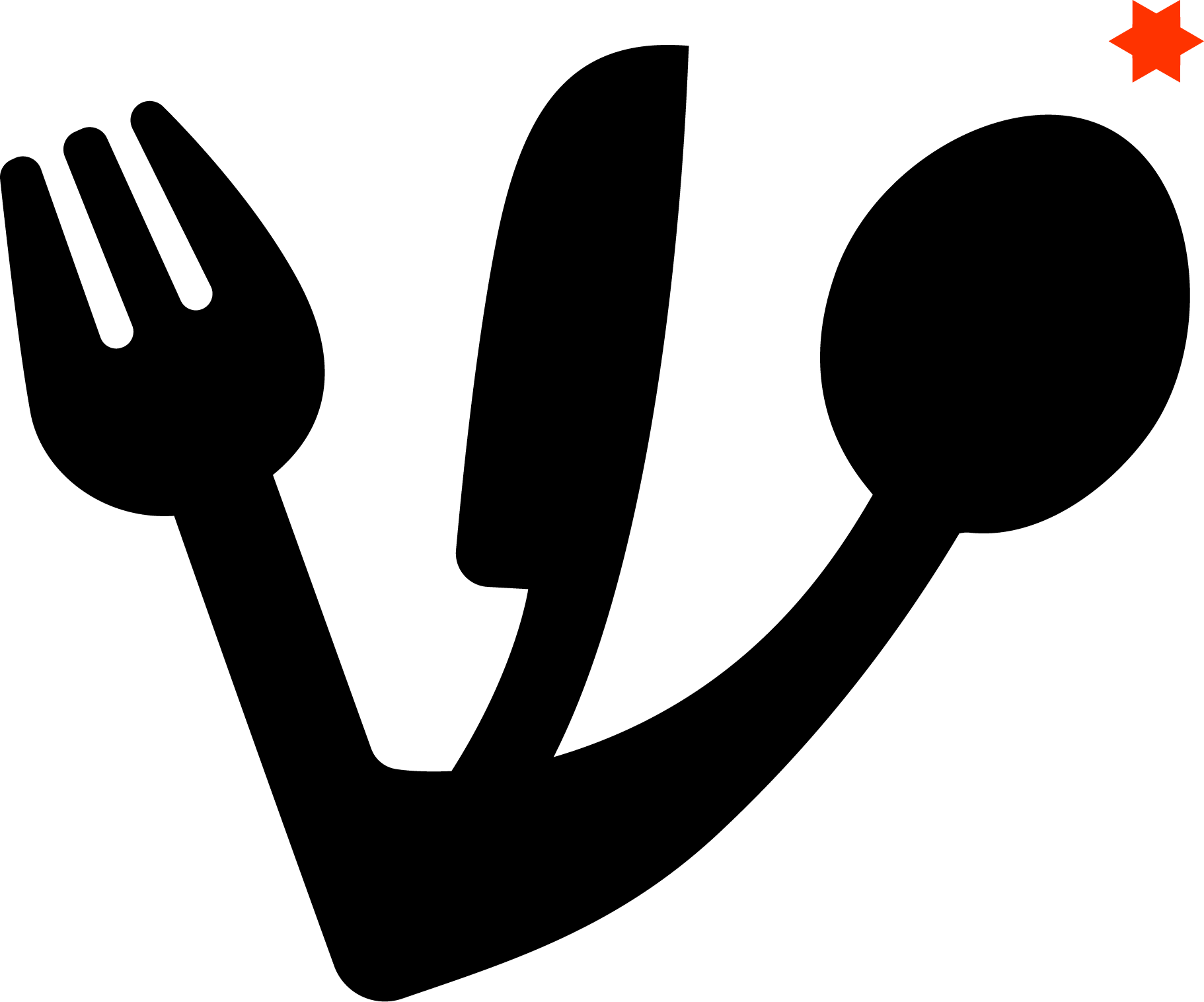

There is a blog that collected “Yiddish Resistance” graffiti found in 2011 on the Mazzesinsel. The graffiti asked for the neighborhood to be officially named Mazzesinsel. “Licht im Bild” in German: https://luxxx.wordpress.com/2011/02/26/judischer-widerstand-per-hauswand/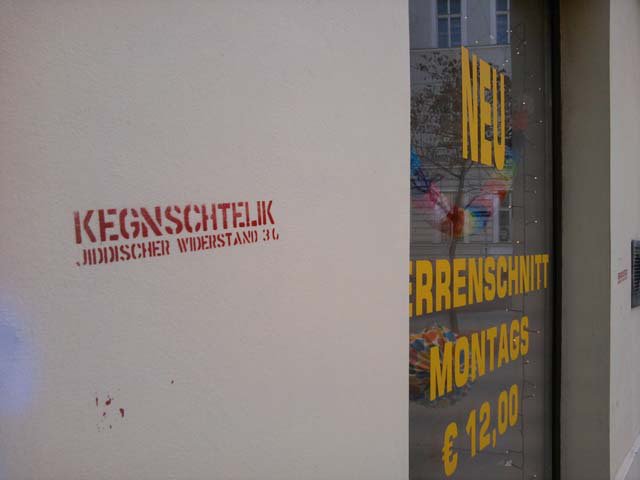

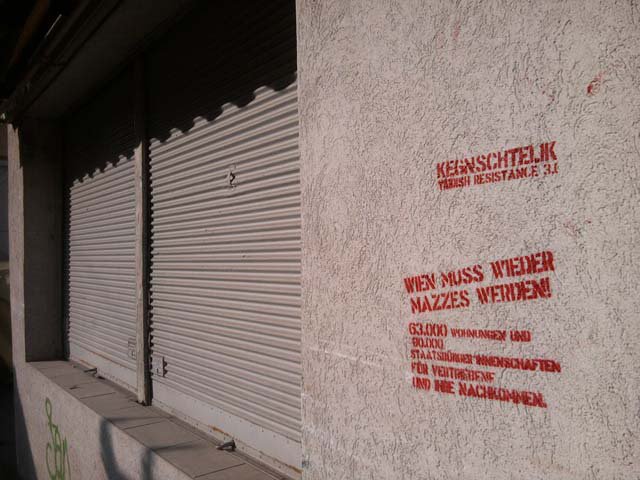

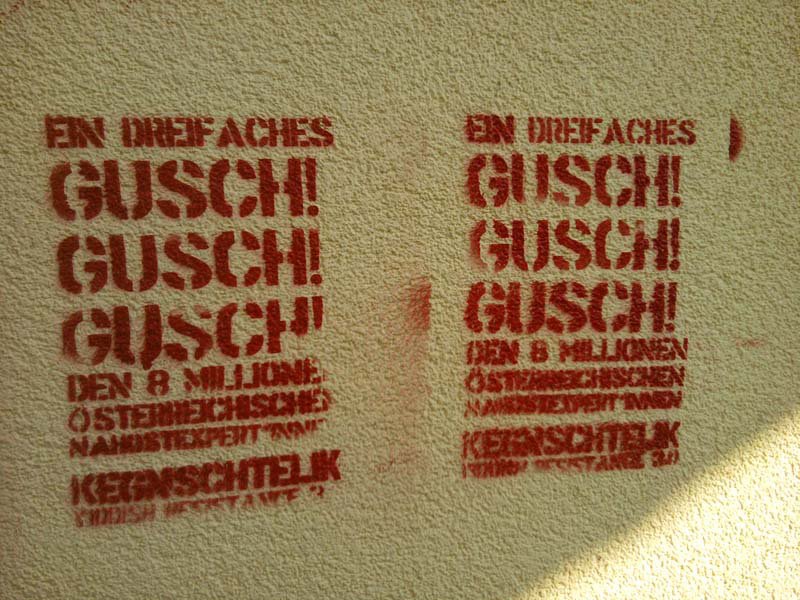
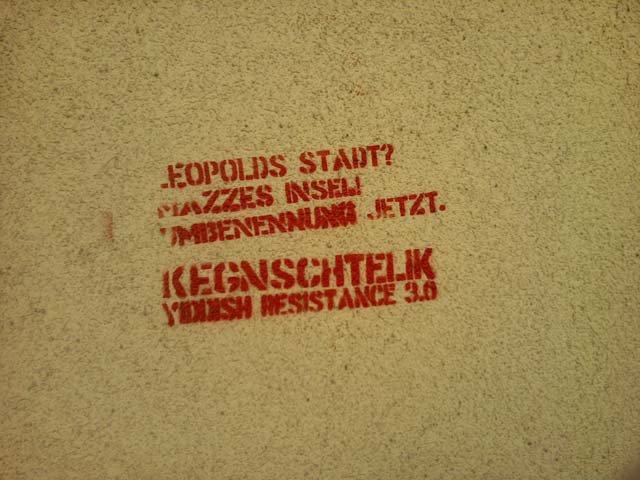
We recently saw the filmed play Leopoldstadt by the English playwright Tom Stoppard which chronicles the demise of a Jewish family in Vienna. A very powerful and moving account which I highly recommend.
Thank you for the info. Where did you see it?
We saw it at a cinema in Melbourne. It is a movie of a live play by the English National Theatre. By the way we will be in Vienna in October. Hopefully we can meet
Looking forward to seeing you in Vienna!